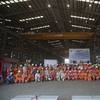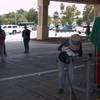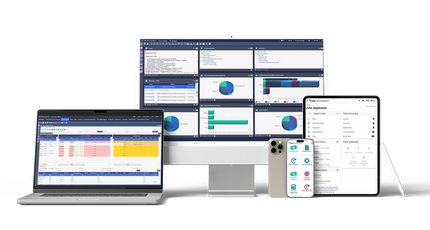Coast Guard Releases Report on LNG Ships
Additional traffic management measures will be needed because of a narrow shipping channel, numerous navigational hazards, and the proximity to populated areas. A traffic management plan will be developed prior to the first transit. For the first six months there will be at least two pilots throughout the transit, and all transits will be by daylight only. Meetings situations of commercial vessels will be closely controlled, and all meetings must be pre-arranged via Channel 13 VHF bridge-to-bridge and will be limited to four areas. The Coast Guard, FBI, bar pilots and river pilots, escort tug masters and other escort assets will meet 24 hours prior to arrival to coordinate inbound and outbound transit details. Transits and bar crossings will be coordinated so as to minimize conflicts with other deep draft vessels, recreational boaters, and seasonal fisheries.
Other navigational requirements include a camera system capable of monitoring the entire route, two tugs to escort the LNG carrier, plus another tug for turning and mooring, navigational aids such as buoys or daymarks, LNG carrier familiarization training for pilot and tug operators, and installation of a dynamic under keel clearance system. Safety Measures Ordered Safety measures required include vessel and facility inspections, shore-side firefighting capability, in-transit firefighting planning, a public notification system and procedures, gas detection capability, and communications systems and protocols. Recommended security measures include security boardings, waterway monitoring and shoreline patrols plus restricting LNG vessels to transiting in good visibility when cruise ships are in port. LNG facilities are required to submit a facility security plan and undergo an annual Coast Guard security inspection. The next step is for the Coast Guard to continue working with the FERC on the development of an Environmental Impact Statement that addresses the effects of the proposed safety and security measures all along the waterway. Source: Clatskanie













